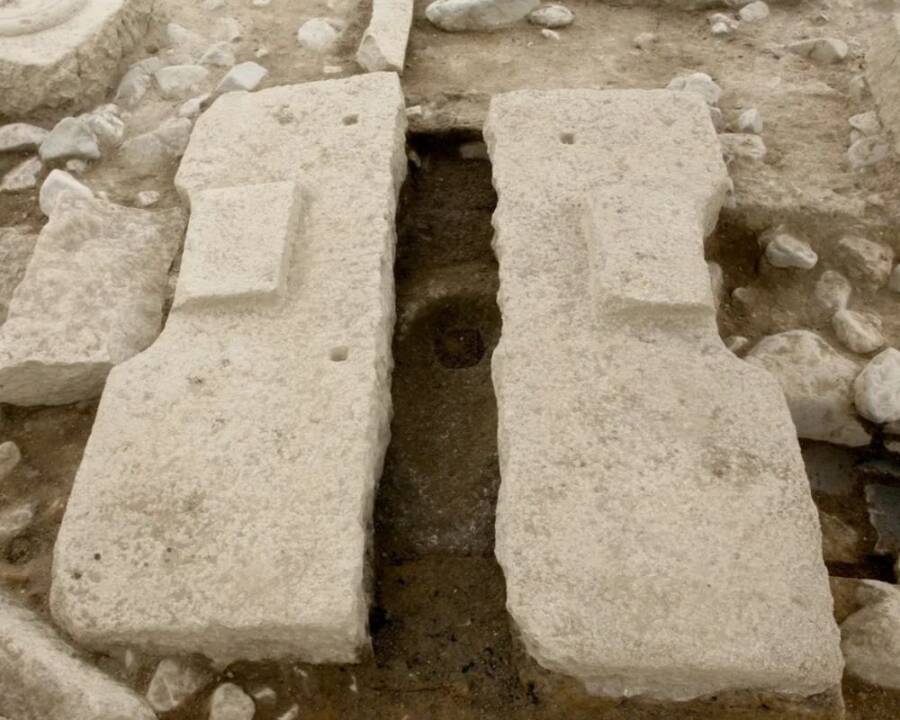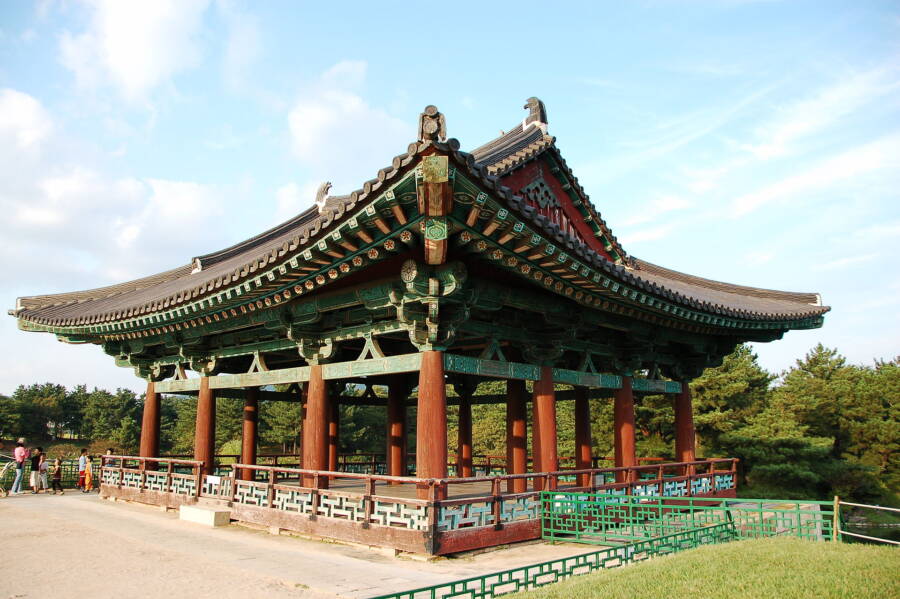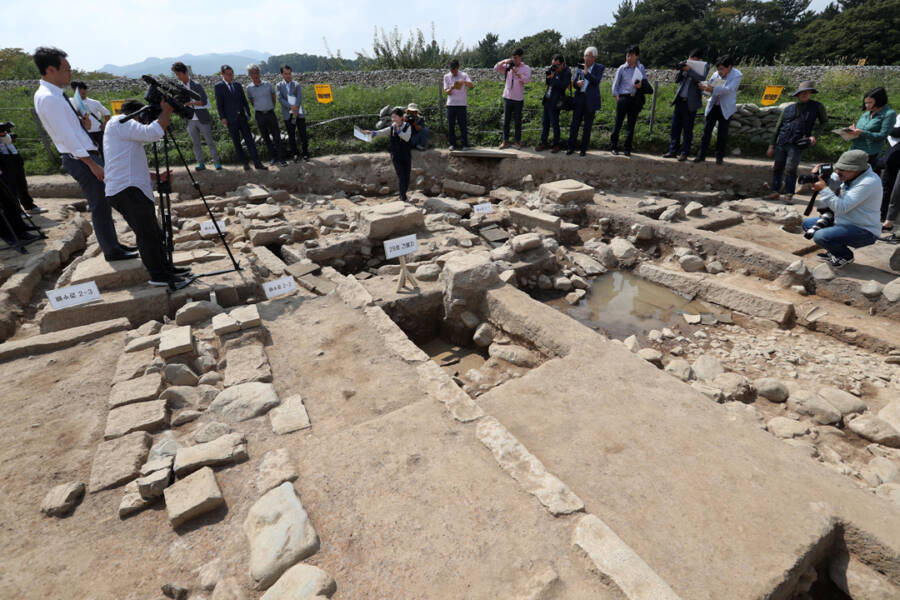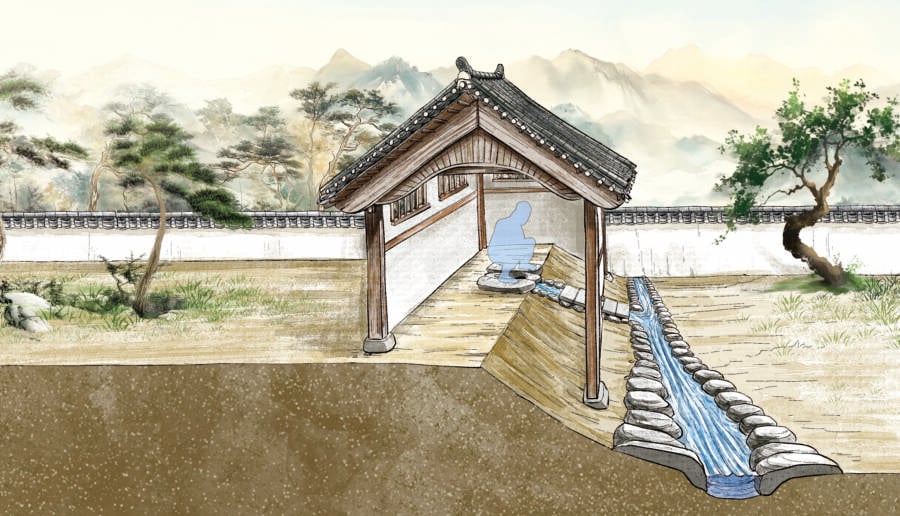The flush toilet, the oldest of its kind ever found in South Korea, was likely used by a crown prince and the high-ranking women who lived at Donggung Palace.

Kim Gyeong YeolThe granite toilet features a stepping stone on either side for users to place their feet.
Archaeologists excavating the ruins of Donggung Palace near Gyeongju, South Korea, recently came across a unique flushing toilet that was likely used by a crown prince of the Silla Dynasty some 1,300 years ago.
The oldest of its kind ever found in the country, the toilet drained directly into a nearby river. While this isn’t hygienic by today’s standards, it was revolutionary in Korea at the time and is evidence of the importance of sanitation in the culture.
Archaeologists Uncover Korea’s First Known Flushing Toilets

riNux/Wikimedia CommonsA reconstructed pavilion near the site of Donggung Palace.
A 12th-century chronicle mentions that Donggung Palace, a royal dwelling built for the crown prince of the Silla Dynasty (668 to 935 C.E.), was constructed near the main palace in 679 C.E., but it doesn’t detail exactly where it stood. Archaeologists spent years searching for it, first excavating the west side of Wolji Pond, the artificial body of water that was part of the palace complex.
When experts determined that the ruins found there were an extension of the main palace, they began excavating the east side instead. There, they uncovered what they now believe is Donggung Palace due to its location, its size, and the artifacts found inside. These include bowls, plates, patterned bricks — and toilets.
Several flush toilets were discovered in the palace, though one of them stood apart from the others. Most of them functioned like traditional outhouses, with servants pouring water on the waste to propel it through the pipes and into a holding area. However, one drained directly into a nearby river.

Kim Gyeong YeolThe Donggung Palace excavation site, where archaeologists found the 1,300-year-old flushing toilet.
This unique toilet was made of granite and had stepping stones on either side for the user to place their feet. Researchers believe it was used by the crown prince himself, as well as high-ranking women who lived in the palace.
“This is an early example of a sophisticated plumbing system, reinforcing the idea that this was a royal facility,” said Kim Gyeong Yeol, the excavation leader and an archaeologist with the Korea Heritage Service, as reported by Korea JoongAng Daily.
Now, researchers are hoping their discovery can help them learn more about early Korea and the people who ruled it.
What Can This Toilet Tell Us About Korean History?
While the first flushable toilets were used by the Indus Valley Civilization between 2600 and 1900 B.C.E., these toilets at Donggung Palace are the earliest of their kind found in Korea.
“[A toilet] that directly discharges it into the river seems to have a hierarchical meaning,” Kim Gyeong Yeol told Live Science. Researchers believe it was the job of the royal family’s attendants to flood the toilet with water to help propel the waste into a culvert 23 feet away that connected to a nearby river. The clear quality divide between this toilet and the others at the palace points to Korea’s historical attitudes towards class and privilege.

Korea Heritage ServiceAn illustration of how the royal toilet would have been used.
Because the toilet’s drainage system is so well preserved, archaeologists are hopeful that they will be able to extract information about the royal family’s diet and lifestyle from lingering human waste.
As Korea’s National Heritage Administration wrote in a press release, “Through microbial analysis of toilet remains, we can elucidate the health and eating habits of people at that time.”
After reading about the flush toilet found in a Korean palace, dive into the complicated history of who invented the toilet. Then, read about the foricae, the public toilets of ancient Rome that left no room for personal space.





